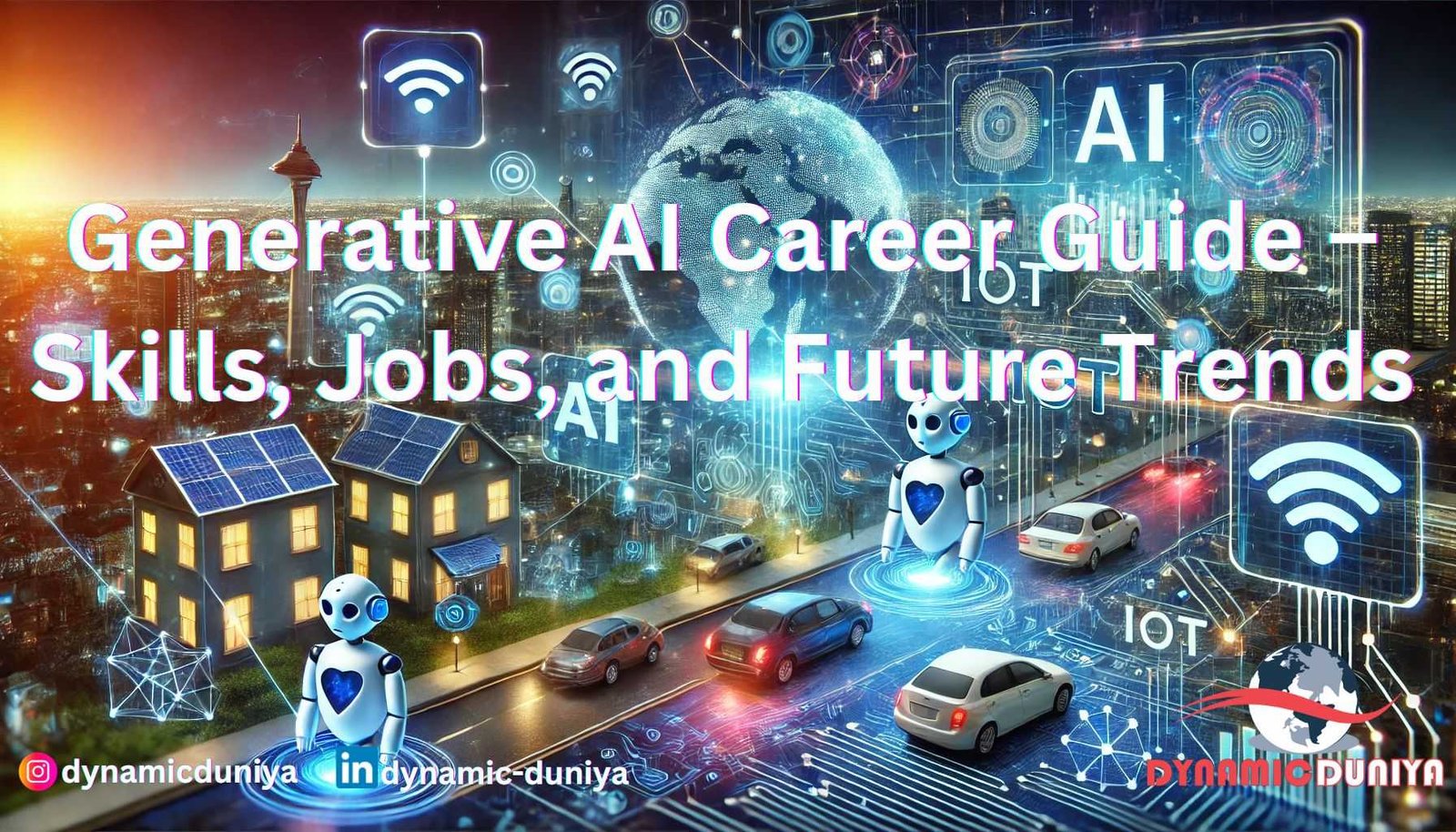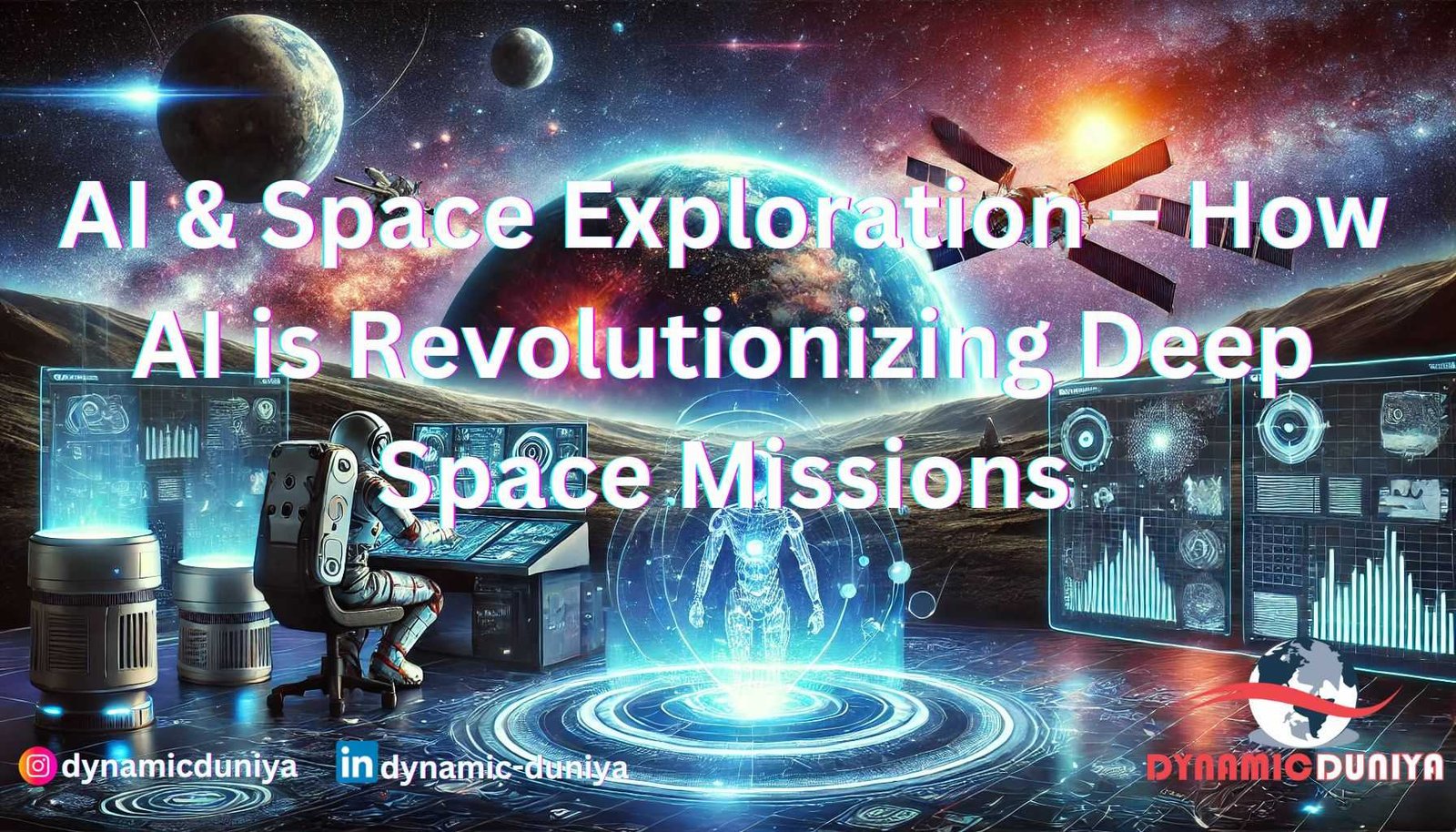Generative AI - The Future of Artificial Intelligence

Introduction: The Power of Generative AI
Generative AI is one of the most exciting advancements in artificial intelligence. From ChatGPT writing human-like text to DALL·E creating stunning images, AI is no longer just about automation—it’s about creativity. This blog explores how Generative AI works, career opportunities, salaries in 2025, and how you can build a future-proof career in AI.
1. What is Generative AI?
Generative AI refers to AI models that generate new content—text, images, music, videos, and even code—based on patterns they have learned. It is powered by technologies like Deep Learning, Neural Networks, and Natural Language Processing (NLP).
Examples of Generative AI Models:
- ChatGPT (by OpenAI): Generates human-like text
- DALL·E & Midjourney: Creates AI-generated images
- Google Bard: Conversational AI
- Runway ML: AI-powered video editing
- GitHub Copilot: Assists developers in writing code
2. How Does Generative AI Work?
Generative AI models use Neural Networks (such as GANs and Transformers) to analyze huge datasets and create new content.
- GANs (Generative Adversarial Networks): Used for AI art, deepfake videos, and more.
- Transformers (like GPT & BERT): Used for text generation, chatbots, and content creation.
Example: When you ask ChatGPT a question, it predicts the most likely words to generate a coherent response, based on its training data.
3. Real-World Applications of Generative AI
Generative AI is already transforming industries. Here’s how companies are using it:
Content Creation
- Automated article writing (e.g., AI news writers)
- AI-generated social media posts
- AI-powered video generation (Runway ML)
Healthcare
- AI-powered drug discovery (Google DeepMind)
- AI-generated medical reports
- Personalized healthcare chatbots
Finance & Business
- AI-generated stock market insights
- Fraud detection using AI patterns
- AI-driven financial forecasting
Entertainment & Gaming
- AI-generated music & art
- AI-powered character animation in games
- AI-written movie scripts
Software Development
- AI-powered coding assistants (GitHub Copilot)
- Automated bug detection in software
4. Skills Required for a Career in Generative AI
If you want to build a career in Generative AI, here are the must-have skills:
- Programming Languages: Python, R, JavaScript
- Machine Learning Frameworks: TensorFlow, PyTorch
- Deep Learning & Neural Networks
- NLP & Computer Vision
- Big Data & Cloud Computing (AWS, Google Cloud, Azure)
- Mathematics & Statistics (Linear Algebra, Probability, Calculus)
Bonus Tip: Learn about LLMs (Large Language Models) and Prompt Engineering—these are high-paying skills in 2025!
5. Job Roles & Career Paths in Generative AI
Generative AI is creating new job roles in AI and tech companies.
Top AI Job Roles:
- AI Engineer – Builds AI models for automation
- Machine Learning Engineer – Develops ML models
- AI Research Scientist – Innovates new AI technologies
- AI Prompt Engineer – Creates AI-powered prompts for chatbots
- Creative AI Developer – Works on AI art, music, and video
- AI Data Scientist – Analyzes AI-generated data
6. Salary Trends for Generative AI in India (2025)
The demand for AI professionals is skyrocketing in India, leading to high salaries.
| Job Role | Salary (INR per year) |
|---|---|
| AI Engineer | ₹12-25 LPA |
| Machine Learning Engineer | ₹10-22 LPA |
| AI Research Scientist | ₹18-40 LPA |
| AI Prompt Engineer | ₹8-15 LPA |
| AI Data Scientist | ₹12-28 LPA |
| NLP Engineer | ₹15-30 LPA |
AI Engineers with advanced skills can earn up to ₹50 LPA!
7. Future Demand for Generative AI (2025 & Beyond)
Generative AI is expected to create 10+ million new jobs worldwide by 2030!
Industries that will hire AI professionals in the future:
- Tech Companies (Google, OpenAI, Microsoft)
- Healthcare & Pharma (AI-driven drug discovery)
- Finance (AI stock trading, fraud detection)
- E-commerce (AI-generated product descriptions)
- Media & Entertainment (AI video & music generation)
8. How to Start Your Generative AI Career?
Follow this step-by-step guide to start your AI journey:
- Step 1: Learn Python, Machine Learning, and Deep Learning
- Step 2: Take online courses (Coursera, Udemy, edX)
- Step 3: Build AI projects (Chatbots, AI Image Generators)
- Step 4: Join AI communities (Kaggle, GitHub)
- Step 5: Apply for internships & AI jobs
Top Free AI Learning Resources:
- Google AI & Deep Learning Courses
- Fast.ai - Free Deep Learning Course
- OpenAI GPT & DALL·E Documentation
Conclusion: The Time to Start is NOW!
Generative AI is shaping the future of technology, jobs, and creativity. Whether you're a student, developer, or working professional, this is the best time to learn AI and build a high-paying career.
Random Blogs
- Internet of Things (IoT) & AI – Smart Devices and AI Working Together
- Navigating AI Careers in 2025: Data Science, Machine Learning, Deep Learning, and More
- Big Data: The Future of Data-Driven Decision Making
- 10 Awesome Data Science Blogs To Check Out
- String Operations in Python
- Understanding LLMs (Large Language Models): The Ultimate Guide for 2025
- Datasets for Speech Recognition Analysis
- Time Series Analysis on Air Passenger Data
- Data Analytics: The Power of Data-Driven Decision Making
- Understanding Data Lake, Data Warehouse, Data Mart, and Data Lakehouse – And Why We Need Them
Prepare for Interview
- JavaScript Interview Questions for 5+ Years Experience
- JavaScript Interview Questions for 2–5 Years Experience
- JavaScript Interview Questions for 1–2 Years Experience
- JavaScript Interview Questions for 0–1 Year Experience
- JavaScript Interview Questions For Fresher
- SQL Interview Questions for 5+ Years Experience
- SQL Interview Questions for 2–5 Years Experience
- SQL Interview Questions for 1–2 Years Experience
- SQL Interview Questions for 0–1 Year Experience
- SQL Interview Questions for Freshers
- Design Patterns in Python
Datasets for Machine Learning
- Awesome-ChatGPT-Prompts
- Amazon Product Reviews Dataset
- Ozone Level Detection Dataset
- Bank Transaction Fraud Detection
- YouTube Trending Video Dataset (updated daily)
- Covid-19 Case Surveillance Public Use Dataset
- US Election 2020
- Forest Fires Dataset
- Mobile Robots Dataset
- Safety Helmet Detection
- All Space Missions from 1957
- OSIC Pulmonary Fibrosis Progression Dataset
- Wine Quality Dataset
- Google Audio Dataset
- Iris flower dataset
- Artificial Characters Dataset
- Bitcoin Heist Ransomware Address Dataset






